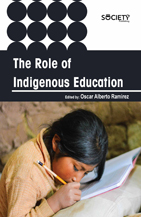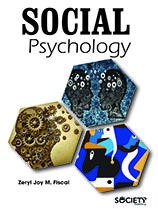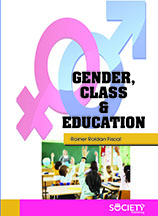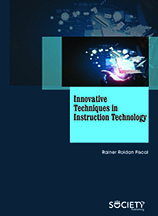Tab Article
This book takes the readers through several aspects of Indigenous Education. This book gives a brief introduction to indigenous education, overview of formal and informal indigenous education, indigeneity and global citizenship, importance of language, barriers to indigenous student success , Indigenous education & digital technology and indigenous knowledge as education. The book briefly explains leadership challenges in indigenous education. All these topics are detailed throughout the book in each of its chapters: Chapter 1: Indigenous Education: Introduction, Chapter 2: Overview of Formal and Informal Indigenous Education, Chapter 3: Indigeneity and Global Citizenship, Chapter 4: Indigenous Education and Importance of Language, Chapter 5: Leadership challenges in Indigenous Education, Chapter 6: Barriers In Indigenous Higher Education, Chapter 7: Indigenous Education and Digital Technology. The first chapter stresses on the basic introduction to indigenous education, challenges of indigenous peoples with regards to education, traditional education & modern education, so that the readers are clear about the philosophies behind that form the utmost basics in the field. This chapter will also emphasize on purpose and impact of colonial education. The second chapter takes the readers through the overview of formal and informal indigenous education. This chapter will provide highlights on the various key aspects like formal and informal educational systems, relations of power and educational distinctions, knowledge boundaries & dynamics of knowledge systems and knowledge relations, formal and informal learning etc. Then, the third chapter explains indigeneity and global citizenship. It also explains globality and indigeneity: dialectic dimensions of identity, a globalizing indigenous people- the Hadza of Tanzania, The Jews of Israel, global citizenship and discourses of global citizenship. The fourth chapter introduces indigenous education and importance of language. This chapter also indigenous education in political context, Benefits of Indigenous education, challenges of Indigenous education, effect of globalization on indigenous education and drawbacks and difficulties of responding to climate change. The chapter also sheds light on Indigenous people and renewable energy projects. The fifth chapter throws light on leadership challenges in indigenous education. The chapter explains rights of indigenous people, roles of indigenous modes of Education in contemporary society, future of indigenous education and indigenous education and societal issues. The sixth chapter takes the readers through barriers in indigenous higher education. The readers are then told about the assimilationist anti-indigenous education model, an indigenous paradigm, indigenous experience in higher education, barriers in indigenous higher education and in Students success. In the last chapter of this book sheds lights on indigenous education and digital technology, history of digital technology, benefits of digital technology, indigenous cultures and the internet, benefits of using digital resources, and global need for indigenous education & decolonization . This chapter also mentions various educational approaches to indigenous education. This book has been designed to suit the knowledge and pursuit of the researcher and scholars and to empower them with various aspects of Indigenous Education, so that they are updated with the information. I hope that the readers find the book explanatory and insightful and that this book is referred by the scholars across various fields. With this book, "Role of Indigenous Education", the aim is to free students from the anxiety caused by evaluations. The importance of continuous and holistic assessment is emphasized.









